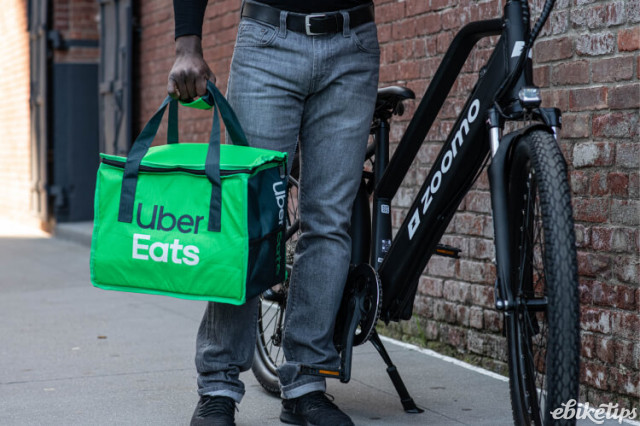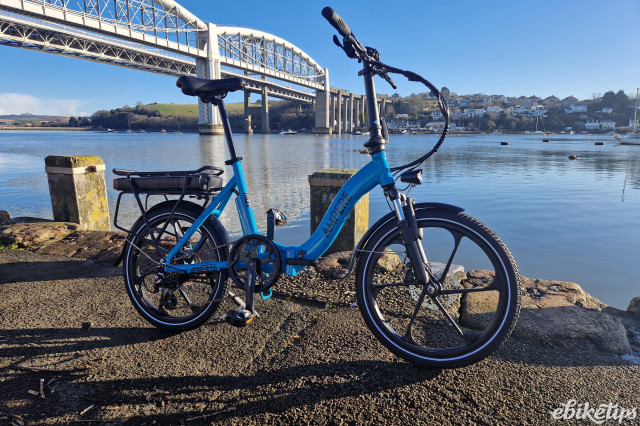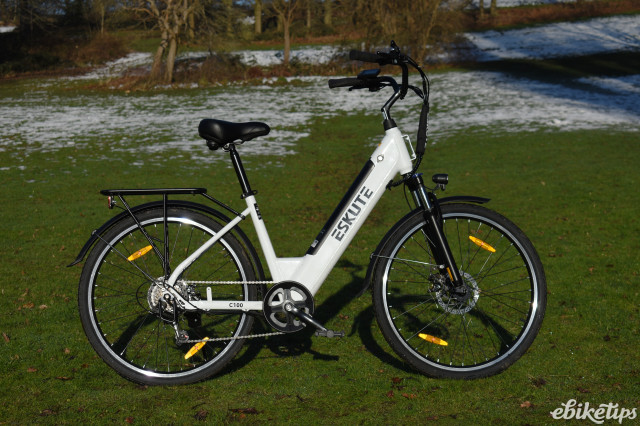Delivery services should take responsibility and liability for the e-bikes operated by their delivery riders, according to Electrical Safety First (ESF). As part of its broader campaign for improved e-mobility battery safety standards, the charity also says that delivery apps should consider providing e-bikes themselves, or running an incentive scheme to encourage their riders to use company-approved vehicles.
Growing numbers of delivery workers now use electric bikes to carry out their work and ESF is not alone in its belief that the industry is particularly vulnerable to batteries, chargers and modifications which may prove a fire risk. In April, London Fire Brigade spoke to Just Eat, Deliveroo and Uber Eats in a bid to raise awareness of e-bike charging dangers.
Most delivery riders are employed as independent contractors and paid by the number of jobs they do, rather than operating as employees. This puts the onus on them to source their own e-bikes at their own cost.
ESF points to DIY modifications as an area of particular concern.
“As conversion kits sold online can be a fraction of the cost of a ready-built e-bike, they are more likely to appeal to those with less disposable income,” states its report.
“Furthermore, concerns have been raised around a growing cottage industry seeking to cash in on bike conversions, adapting ordinary pedal cycles that are then supplied to consumers. These businesses may not be aware that anyone in the supply chain can be held liable for the supply of unsafe products.”
The upshot is that DIY conversions are not uncommon in the delivery industry and ESF points to Deliveroo’s guide to converting your own e-bike as an indication that the practice is far from discouraged.
> How a Deliveroo e-bike rider made £295 in one (very long) day
“Notwithstanding the rise in incidents and the warnings being issued, correctly designed and fitted conversion kits sourced from reputable manufacturers and retailers, fitted professionally to a suitable cycle, are not inherently dangerous,” it adds.
“DIY conversions should be discouraged. We should therefore question the judgement of some delivery businesses that offer guidance on converting your own bike.”
While there is a dedicated safety standard for e-bikes, allowing manufacturers to demonstrate their product meets legal safety requirements, there is currently no such equivalent for e-bike conversion kits. ESF is calling for this to be addressed.
> Potentially dangerous e-bike chargers again found on sale on Amazon and eBay
It says that many e-bike conversion kits available online don’t include a battery, meaning sourcing one is left to the consumer. An incompatibility between battery and charger is frequently cited as being one of the most significant fire risks.
Take a look at our guide for a closer look at what makes some e-bikes batteries and chargers a fire risk.
How to ensure safe e-bikes in the delivery industry
ESF’s e-bike safety campaign calls for better regulation in many areas, but there are several recommendations that specifically relate to the delivery industry.
These are:
- Delivery service businesses should take responsibility and liability for the safety of their riders who use e-micromobility vehicles
- They should also consider providing e-bikes or running an incentive scheme to encourage their riders to use company approved e-micromobility vehicles
- Delivery service riders who use e-micromobility vehicles must declare that their mode of transport is road legal
- Delivery service businesses should stipulate e-micromobility specifications and maintenance requirements
- Delivery service businesses should consider providing a safe charge bag or similar fire-protection enclosure to riders who use e-micromobility vehicles
In April, New York City adopted another of ESF’s recommendations – that all e-bike, e-scooter and other LEV battery packs be certified by a third-party.
In response to the development, Uber announced an e-bike trade-in scheme aimed at delivery riders.
New York has also since announced that $25m will be invested in 173 outdoor charging stations in a bid to reduce the number of charging fires which have occurred inside homes.






